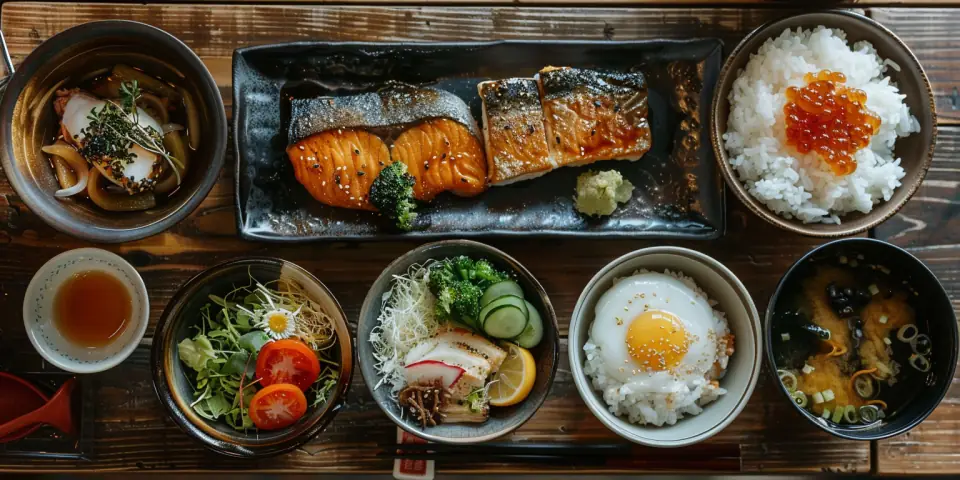
Grocery Shopping in Japan: A Comprehensive Guide
Understanding Japanese Supermarkets
Navigating Japan’s Grocery Stores: Tips for a Seamless Shopping Experience
As you embark on your culinary adventure in Japan, navigating the local grocery stores can be an overwhelming experience, especially with the language barrier. However, with some insider knowledge and preparation, you can make the most of your shopping trips and discover the hidden gems of Japanese cuisine.
Plan Ahead
Before heading to the supermarket, take some time to research the types of ingredients and products you need for your recipes. This will help you navigate the aisles more efficiently and avoid confusion. You can also use online resources or apps to learn basic Japanese phrases related to food shopping, such as “sumimasen” (excuse me) and “arigatou” (thank you).
Cash is King
While many supermarkets in Japan accept credit cards, it’s still a predominantly cash-based society. Make sure to have some local currency on hand, especially when visiting smaller stores or markets.
Respect Local Customs
When shopping, be mindful of the cultural norms and customs. For instance, it’s customary to bag your groceries yourself, and some stores may not provide plastic bags. Additionally, refrain from eating while walking or in public areas, as this is generally frowned upon.
Explore Beyond the Big Chains
While larger supermarket chains like Aeon and Ito-Yokado offer a wide range of products, don’t be afraid to venture into smaller, local shops and markets. These hidden gems often carry unique regional specialties and can provide a more authentic shopping experience.
By following these tips, you’ll be well on your way to navigating Japan’s grocery stores like a pro. Happy shopping!
Unique Finds and Cultural Insights
Unique Finds and Cultural Insights
As you delve deeper into Japan’s culinary scene, you’ll discover a world of unique finds and cultural insights waiting to be uncovered. From specialty neighborhoods to hidden gems, each region offers a distinct shopping experience that showcases the country’s rich heritage.
Discover Tokyo’s Hidden Gems
In Tokyo, explore the charming neighborhood of Shimokitazawa, known for its quaint shops, vintage boutiques, and artisanal food stores. This area is a treasure trove for those seeking unique souvenirs, handmade crafts, and gourmet delights. Visit the iconic Shibuya Crossing, surrounded by trendy shopping districts like Harajuku and Omotesando, where you can find everything from high-end fashion to quirky accessories.
Experience Osaka’s Food Heaven
Osaka, known as Japan’s food capital, is a paradise for culinary enthusiasts. The Dotonbori neighborhood is famous for its street food, restaurants, and unique shopping experiences. Be sure to visit the Kuromon Ichiba Market, a historic marketplace offering a wide range of fresh seafood, local produce, and specialty ingredients.
Kyoto’s Traditional Charm
In Kyoto, stroll through the picturesque Gion district, famous for its geisha culture and traditional Japanese architecture. Visit the Nishiki Market, nicknamed “Kyoto’s Kitchen,” which offers a variety of local specialties, including miso, soy sauce, and Japanese sweets.
By exploring these specialty neighborhoods and markets, you’ll gain a deeper understanding of Japan’s rich cultural heritage and discover unique ingredients to elevate your culinary creations. Remember to respect local customs, plan ahead, and be prepared for an immersive shopping experience that will leave you with unforgettable memories of Japan.
Tips for Efficient Shopping
Embracing the art of grocery shopping in Japan is an immersive experience that requires some planning, cultural understanding, and a willingness to adapt. As you explore Japan’s culinary scene, navigating its supermarkets can be a fascinating yet overwhelming world. To make the most of your shopping trips, it’s essential to be mindful of prices, meal planning, and supermarket culture.
Understanding how to interpret prices at Japanese supermarkets is crucial, enabling you to compare prices effectively and make informed purchasing decisions. This knowledge will also help you discover easy recipes that utilize staple ingredients commonly found in Japanese cuisine. Moreover, being aware of prices can inspire creativity in your cooking, as you experiment with different ingredients and dishes.
Shopping during early hours can be beneficial, particularly before the supermarket closes, as you can take advantage of discounts on products nearing their expiration dates or those that are about to be discontinued. Keeping an eye out for designated areas with discounted items, which are still safe and nutritious but need to be consumed quickly, will not only save you money but also contribute to a more sustainable environment by reducing food waste.
Staying informed is crucial in Japan’s supermarket culture. By staying updated with supermarket updates through various channels, you can avoid missing out on the best deals available. As you adapt to this unique culture, understanding food expiration dates and navigating aisles for bargains becomes essential. Moreover, respecting local customs and embracing these shopping strategies will put you well on your way to a more mindful and sustainable grocery shopping experience in Japan.
By adopting these approaches, you’ll be able to navigate the complexities of Japanese supermarkets with confidence, making the most of your shopping trips while minimizing waste and supporting sustainability.
Recent Posts
- Discovering Unique Souvenirs in Japan: A Guide to Authentic Experiences Jul 23, 2024
- Understanding 'Kanpai': Drinking Etiquette in Japan Jul 23, 2024
- The Rarity of Open Plan Offices in Japan: Cultural and Historical Factors Jul 23, 2024
- Visiting Onsen with Tattoos in Japan: A Guide Jul 23, 2024
- Seasonal Marketing in Japan: Understanding Consumer Trends and Cultural Significance Jul 23, 2024
- A Guide to Japanese Convenience Store Onigiri Jul 23, 2024
- The Evolution and Enduring Appeal of Purikura Photo Booths in Japan Jul 23, 2024
- Uchi-Soto (Insider vs Outsider) Dynamics in Japanese Society Jul 23, 2024
- Mastering Train Travel in Japan: A Comprehensive Guide Jul 23, 2024
- Understanding Japanese Etiquette: A Guide to Bowing, Hanko, and Cultural Significance Jul 23, 2024
